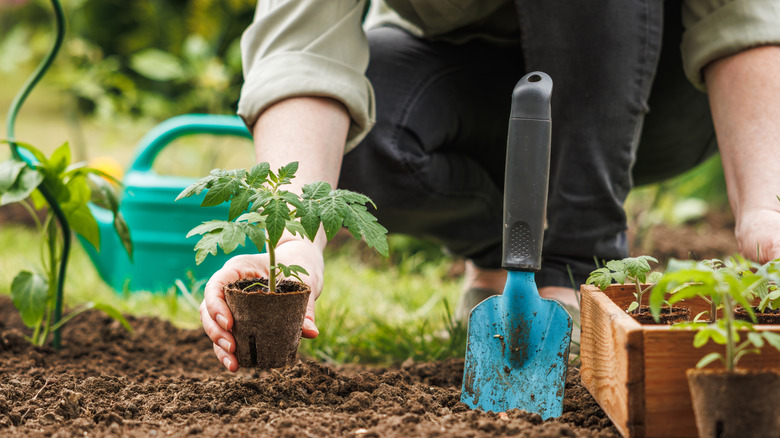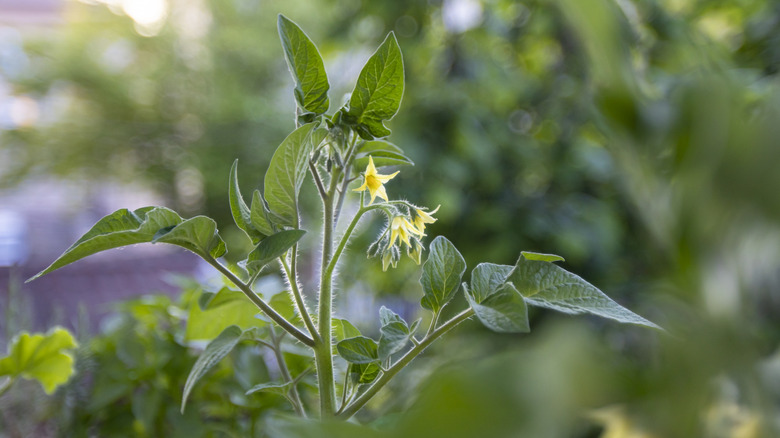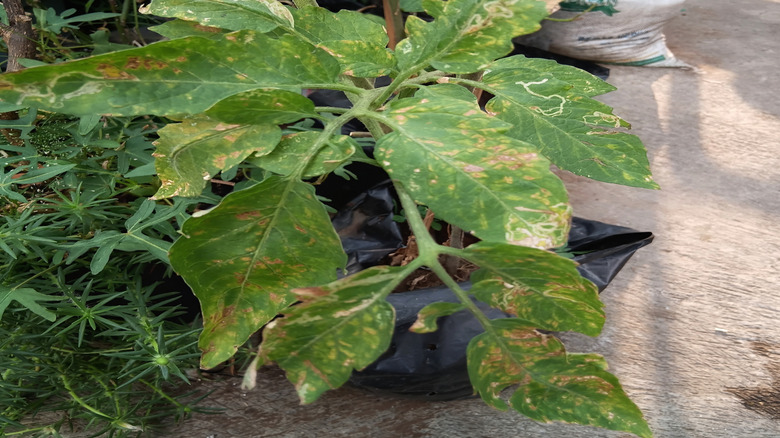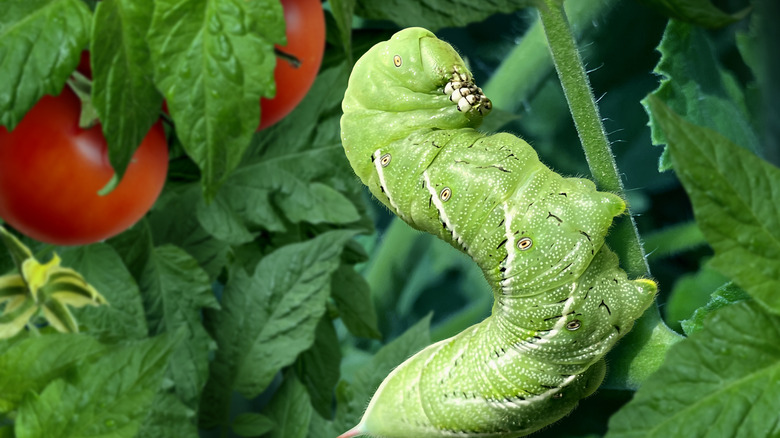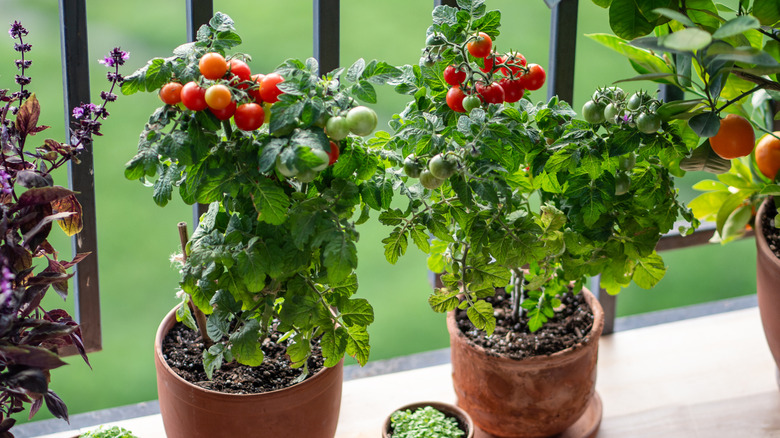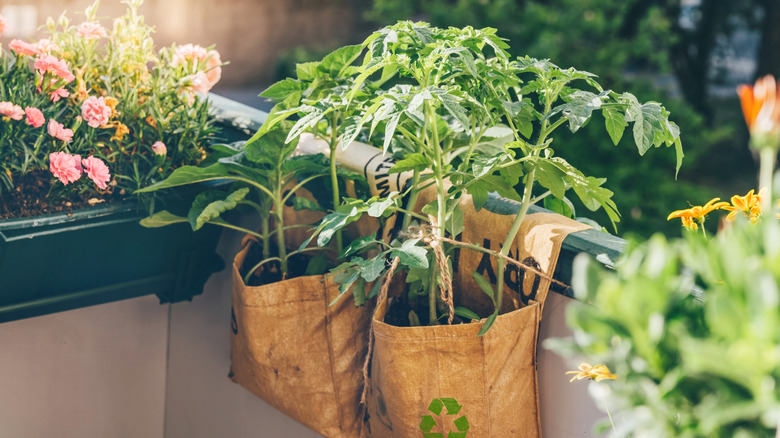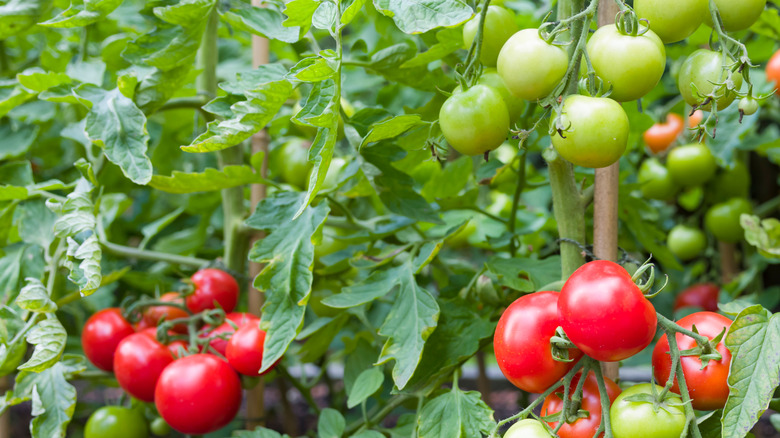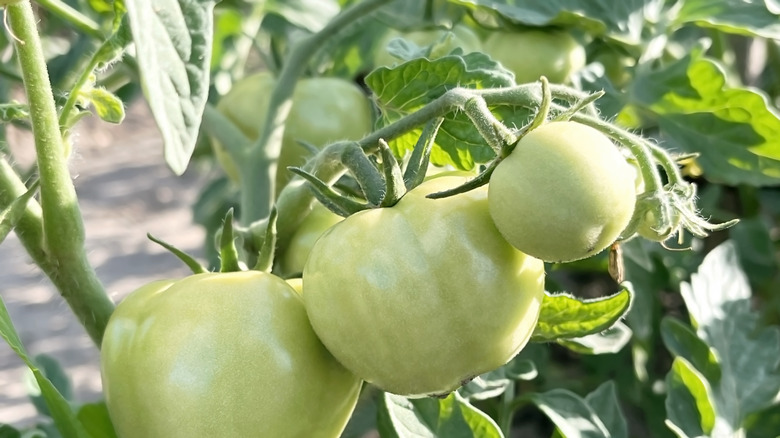Things To Avoid When Buying A Tomato Plant (& What To Look For Instead)
As the weather warms and daylight hours lengthen, it is time to turn our attention to the vegetable garden. In my decades as a professional gardener, I've come to know that many common veggies may be directly sown outdoors or started inside 6-8 weeks before the last date of frost. Due to their maturity duration, some of our heat-loving vegetables, such as tomatoes and peppers, may be available to purchase. This will ensure mature plants that have the best chance of producing plenty of fruit before the season is over. However, buying the right cultivar and variety is key to bumper crops and outstanding fruit.
There are many varieties of tomatoes on the market. Whether you like bite-sized cherries for snacking, slicing tomatoes for the perfect BLT, or plump fruit for sauce, there is an ideal variety available. Before you purchase, there are several things to consider. Not every tomato plant is suited to each garden, grower, and use. As an Urban Agriculturist, here are my tips on mistakes to avoid when buying tomato plants and some guidance on what will help make your tomato season prolific and productive.
Avoid plants that already have flowers and fruit
It can be tempting to get a jump start on the production of fruit by purchasing tomato plants that already bear flowers or even fruit, and it's one of the most common mistakes when buying tomato plants. This means that they are already diverting energy to fruit production. However, when young plants are first settled into the ground, they need to develop feeder roots. These are more shallow roots that help stabilize the plant and gather nutrients and water. When the plant is already dedicating energy to making flowers and fruit, it will not have the reserves to create such a root system.
Either nip off the flowers and fruit or simply avoid buying a plant that is that advanced. Allowing the plant to settle into its new site and grow a complete root system, stems, and leaves may delay your enjoyment of the fruit. However, in my years of gardening experience, I've noticed that removing early fruit and flowers will lead to a healthier plant that produces a bigger crop later when it has established and matured.
Look for signs of disease
As a pro gardener, I want to find the healthiest plants possible, and that means avoiding ones with discolored leaves, including speckles, which could indicate fungal disease. Dry leaf edges, water spots, and any other abnormal coloring on the leaves could be a result of fungal disease, or even viral or bacterial diseases. Stems that are soft, dark in color, or limp are not a good sign of a healthy plant.
You should also look through the drainage holes in the nursery pot and check the root area. Roots that smell, are brown or black, or are compacted may impact the plant's ability to uptake water and nutrients. Smell the soil in the container. If it smells like mold, do not purchase that plant. Bacterial wilt and early blight are two common diseases of young tomatoes. You can keep tomatoes blight-free with a simple garden addition like mulch, but it's ideal to not purchase plants with it to begin with.
You should look for green, lush leaves with new growth coming from the axils. The roots should not be pressing out of the drainage holes or growing into them. The plant stems need to be green, lightly firm, and without signs of distress, and the soil should smell earthy and natural. Paying attention to these cues will result in the purchase of a healthy tomato plant with the best start in your garden.
Check for the presence of pests
Common insect pests of tomato come in all size ranges. Larger caterpillars and certain mature insects are easy to spot. However, tiny pests like thrips can be almost impossible to see with the naked eye. If you have a receipt or other piece of white paper, hold it under the plant and gently shake the stems. If the paper is covered in black dots, the plant likely has thrips. Inspect the plant for ragged, torn, or chewed leaves. Certain pests, like aphids, can cause leaf stippling. Yellowing leaves can occur due to a variety of conditions, but many sucking insects cause fading leaves. Holes in the leaves could be the result of flea beetles, as well as many caterpillars. Spider mites are another common garden problem with tomatoes that must be prevented. If you notice soft or discolored roots, the plant could have root nematodes.
Your plant should look as physically perfect as possible, with no signs of leaf or stem damage. Even if you do not visually detect any insects, those tiny pests could be hiding in the soil or under leaves. So, buy only healthy-looking plants to avoid transplanting pests into your garden.
Avoid buying tomato varieties that are too large for your growing area
Bigger is not necessarily better, and that is true for your tomato selection. Not everyone has a large veggie plot that can sustain the bigger varieties of these nightshades. Tomatoes are divided into two categories: determinate and indeterminate. Determinate plants have a fixed growing point and will generally not get giant vines. They will also tend to produce the majority of the crop in a short period. Indeterminate tomatoes are the ones that require cages or stakes and will continue to produce fruit until the end of the season. They are much larger plants and need plenty of space for both their stems and support structures. If you have just a patio on which to grow, select determinate varieties, which will perform better in containers.
Gardeners with large plots can select any type of tomato, provided it is suited to their needs and zone. But small-space gardeners must be more selective. In many cases, a grape or cherry tomato might be the best option for the lanai or patio grower. Luckily, there are numerous cultivars of snacking tomatoes from which to choose. Whether big or small plants are better depends on the amount of room you have available for mature growth.
Tomato that you will have to keep indoors for too long
Because the growing season is only a fraction of the year, eagerness to get going may cause you to buy plants too early. Even if it is not time to plant outside, many nurseries and garden centers will still have tender plants for sale. However, if you purchase them and try to hold them indoors until it is time to plant, you can be diminishing the plant's health. They may become root-bound in their pots, will not be receiving enough light in most cases, and may flower too early. The plants will be stressed and can become sick when they are finally planted outdoors. Unless you have a heated greenhouse, your plant may become leggy, with flimsy stems and poor vegetative growth.
I recommend waiting until two to three weeks before the planting date. A couple of weeks indoors will not significantly harm the plant. If temperatures are warming well, you can begin to harden off the transplant by putting it outside during the day for gradually increasing periods. This gets the tomato plant used to the temperatures outside, as well as other factors like wind. By the time the plant has been outside for an entire day, your planting date should have arrived, and it will be safe to install it in the ground.
Avoid buying tomato plants that aren't suited for your needs
Indeterminate and determinate aren't the only designations for tomato plants. There are sauce or paste varieties, as well as snacking and slicing. Tomatoes need a significant quantity of water and nutrients to produce those succulent fruits. It would be a shame to select a variety that does not make the fruit you want, especially after expending time and effort. Know what your purpose will be for your tomatoes. Sauced, dried, canned, or eaten fresh, there is a variety best suited for each use.
The first group includes varieties like 'San Marzano', which is an Italian variety prized for authentic sauce. Roma is an ubiquitous paste tomato and comes in both determinate and indeterminate plants. There are many others, each with a slightly different flavor profile, fruit size, and time of harvest. Snacking tomatoes usually include grape and cherry forms, and 'Nova', 'Candy Bell', and 'Sugar Rush' are delicious examples of grape tomatoes. 'Sun Gold', 'Sugar Cherry', and 'Lucky Tiger' are all cherry tomatoes with a unique sweet-acid flavor. If you are a fan of a big slab of tomato on your sandwich, you will want slicing tomatoes. 'Early Girl', 'Big Boy', and 'Mortgage Lifter' will provide medium to large fruits with juicy centers.
Steer clear of heirloom varieties if you are seeking low-maintenance plants
Heirloom plants are wonderful in that they continue a heritage of varieties that were known to be flavorful, robust, and popular at the time. However, heirloom plants do not have the disease resistance our modern tomato cultivars possess. The most common tomato diseases, wilts and blights, will find no resistance in heirloom tomatoes. In my years of tomato growing, I have discovered heirlooms to be high-maintenance when compared to modern hybrids. The resulting fruits also have a shorter shelf life, and crop size is often smaller than that of hybrid cultivars.
So, select hybrids with disease resistance. When you look at the plant tag, there should be abbreviations. These indicate what diseases the plant was bred to resist. For instance, the abbreviation V means Verticillium wilt. F stands for Fusarium wilt, while N is nematode, and T is tobacco mosaic virus. HR means high resistance, while IR indicates intermediate resistance. Several other abbreviated diseases may be common in tomato plants. Your extension office can be helpful here, as they can tell you what diseases are most common in your area so that you can pick a plant with resistance to those pathogens. Whenever possible, select disease-resistant tomato varieties.
Avoid plants that will not produce fruit by the end of your growing season
We put a lot of time, energy, and resources into our vegetable gardens with the promise of fresh produce as our reward. Plant catalogs and the plant tag will generally tell you the time of maturity. This is when you can expect fruit on your tomato plant. It is essential to pay attention to this information, especially if you are a northern gardener with a short growing season. It would be a shame to spend a couple of months babying your plant, only for a first frost to come around in September and kill the tomato. There are short-season tomato plants available, such as Early Girl. As the name would indicate, this variety produces tomatoes in as little as 50 days. Growing tomatoes successfully in cooler climates requires the right variety with an early maturity.
If you want slicing tomatoes, try 'Bush Early Girl', 'Siberian', or 'Celebrity'. For paste-type tomatoes, there are 'Grushovka Siberian' or 'Juliet'. Sweet cherry tomatoes that produce early in the season are 'Galina's Yellow', 'Sun Gold', and 'Black Cherry'. For fast results in cool areas, the 'Sub Arctic Plenty' is a tomato variety with a very quick harvest time.
Don't buy plants like Big Boy if you have a lower light situation
Tomato plants thrive in at least 6 hours of sun per day. Many of the larger slicing tomato varieties like even more light during the day. If you are growing where there are trees or other obstructions to a full day of sunlight, do not despair. From what I've experienced, you can still grow tomatoes, but you have to make your selection carefully. Growing tomatoes in the shade is possible, but the plant needs to be tolerant of low-light situations. Other things to watch for when you grow tomatoes in the shade are overly wet soil and higher incidences of disease. Keep the plants trellised and pruned to allow for good airflow.
Lower light areas will not provide as much solar energy for large amounts of fruit to be produced. So expect a lower yield, but you can have fresh fruits with the proper selection of plants. For bite-sized tomatoes, opt for 'Isis Candy', 'Black Cherry', or 'Golden Sweet'. 'Cherokee Purple' or 'Black Krimm' are excellent, large slicing tomatoes. If you prefer smaller fruits, try 'Green Zebra' or 'Tigerella'. And canning enthusiasts will enjoy 'Mama Leone' or 'Roma'.
